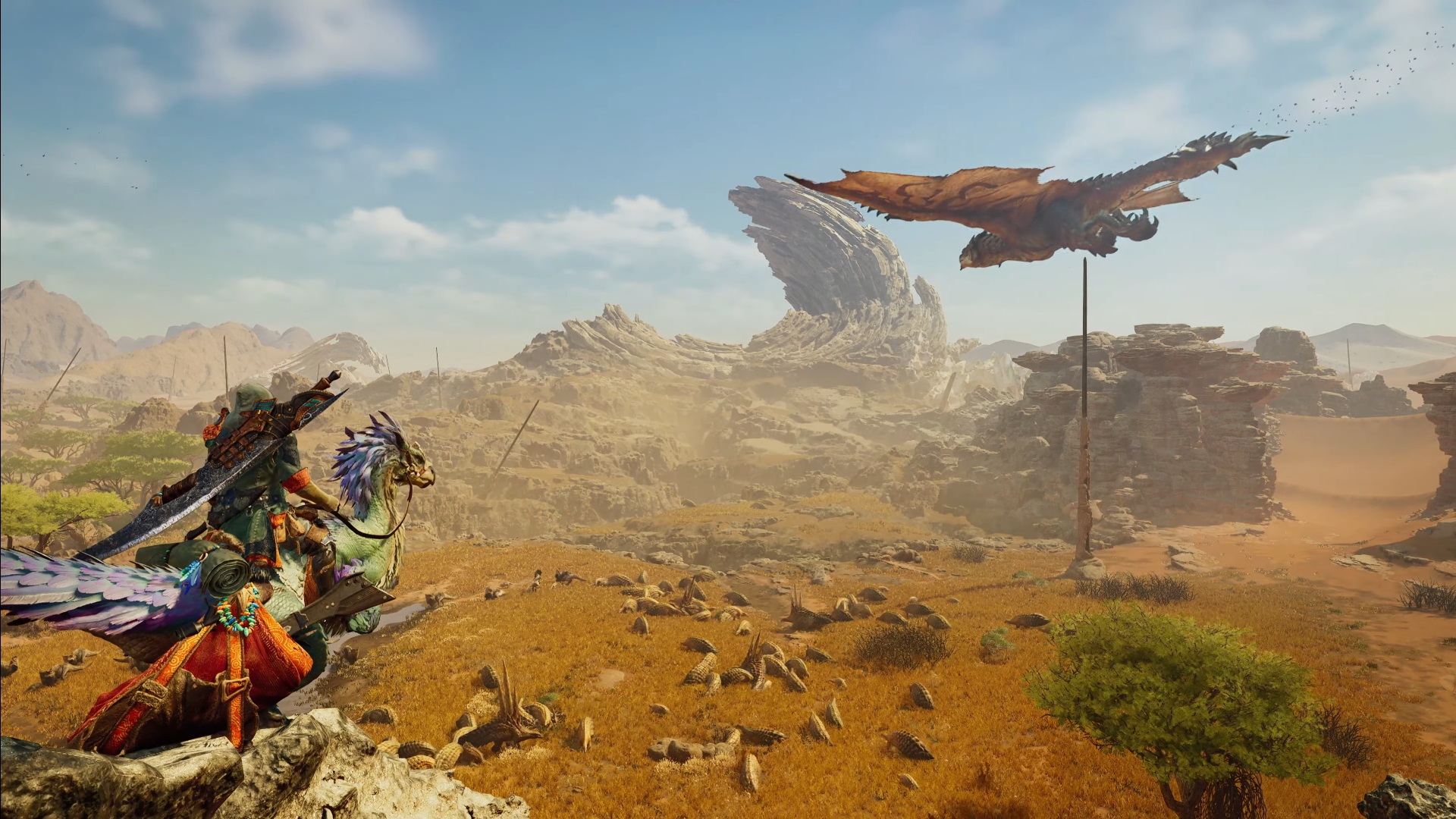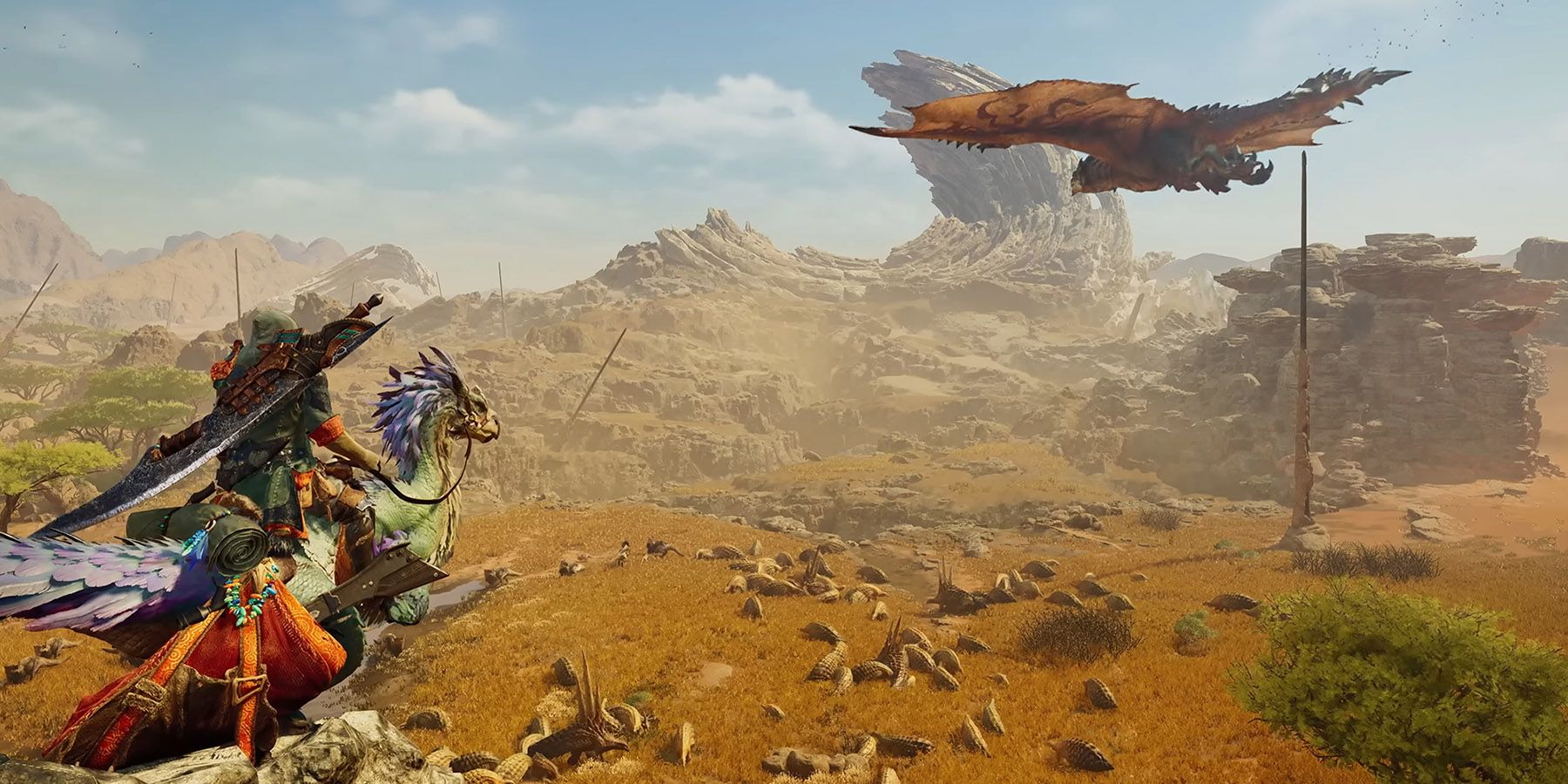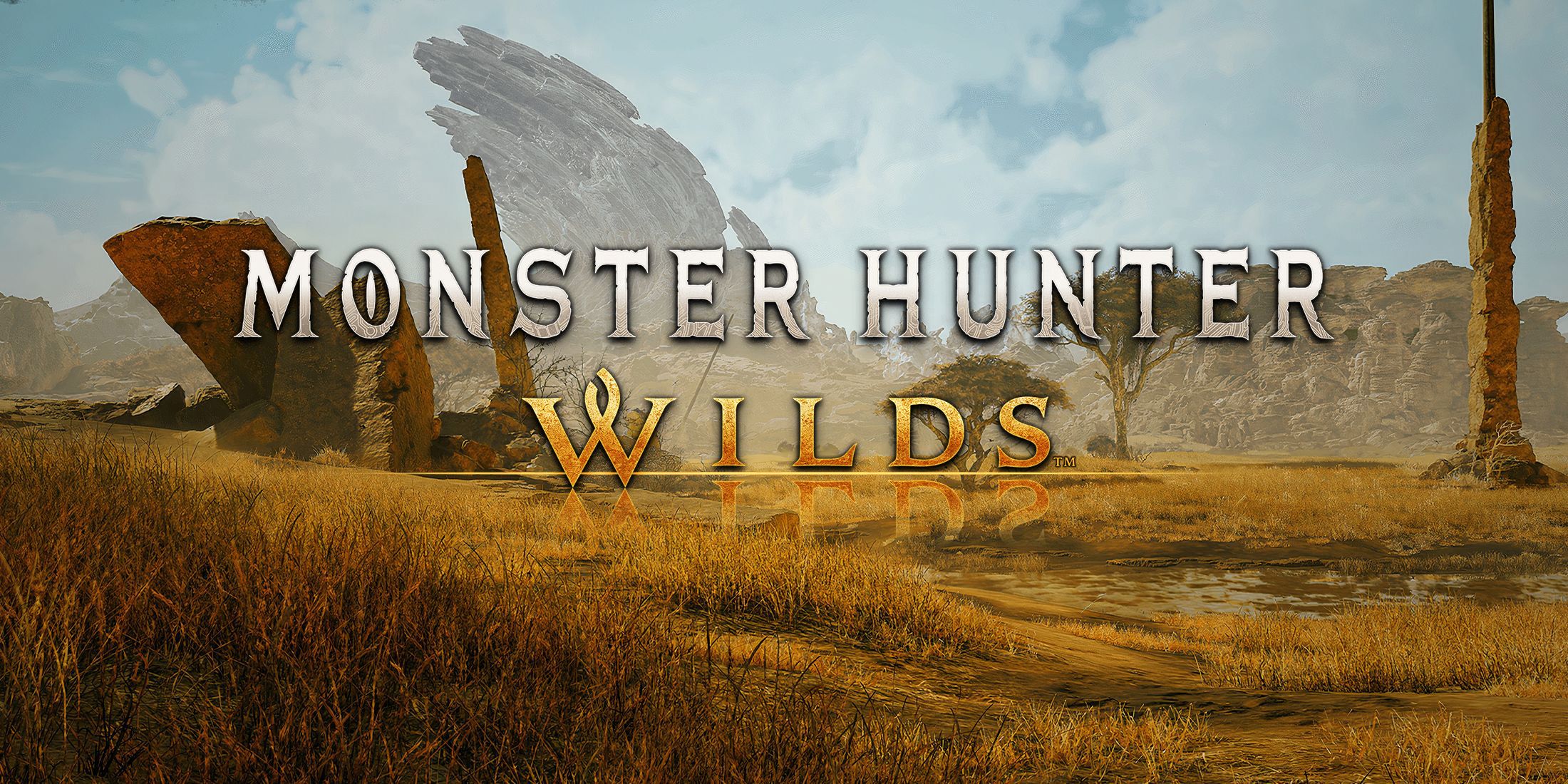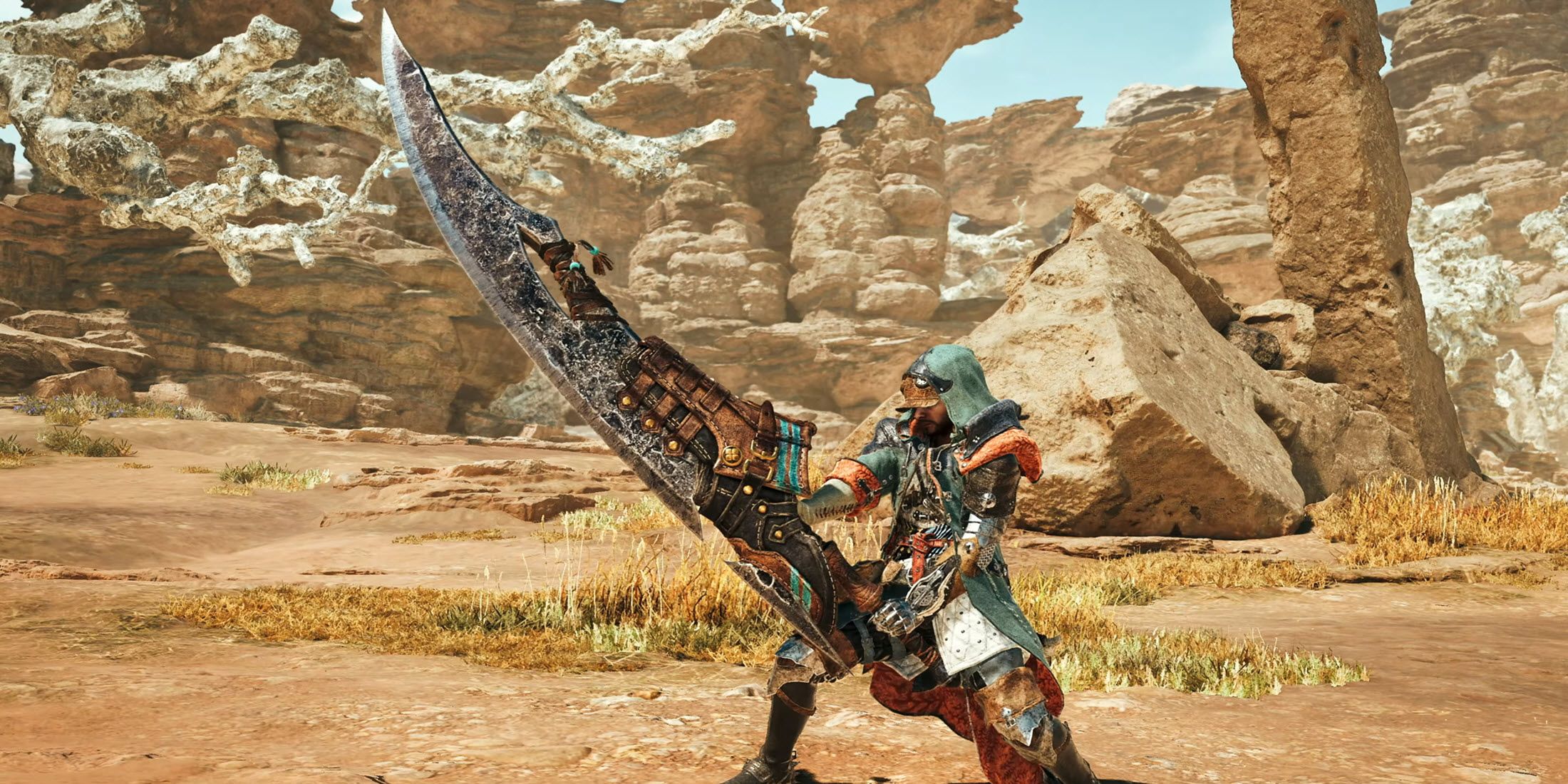Since the beginning of 2025, there have been several standout moments. However, if there is one game that encapsulates this palpable excitement, even as we are only in February, it is the new Monster Hunter, subtitled Wilds. The initials MHW were not chosen at random; they deliberately play on confusion with its illustrious predecessor, Monster Hunter World. When I say grand, it’s not just to shower it with compliments but primarily to recall that it was the episode that led to significant financial success, allowing the license to become the international phenomenon we know today. With over 28 million sales worldwide and nearly 2 billion in revenue, Monster Hunter World captured a broad audience and proved to Capcom they had found the winning formula to unite enthusiasts and newcomers under the banner of hunting big monsters. This recipe has been amplified tenfold in this Monster Hunter Wilds, undoubtedly the most polished and successful episode of the series, likely due to our appreciation for its even more solo narrative approach and Seikret’s standing as one of its best creations.
This is the story of life…
Let us return to the main topic at hand, which is the narrative guiding the progression of Monster Hunter Wilds. In fact, the game continues the structure established in 2018 with World, featuring multiple chapters and cinematic sequences of exceptional quality. Capcom has consistently demonstrated its storytelling prowess, but presenting creatures over 30 meters tall or long remains equally impressive and thrilling. The question many players, particularly those who play in groups, have asked is how the balance between the story mode and the option to simply hunt with friends would be maintained in this game. It is worth noting that Capcom has addressed this concern by designing an initial progression that requires completing the main story before unlocking the endgame content, which then provides unrestricted access to all regions. I completed the primary storyline in approximately 18 hours and spent an additional 30 hours in the endgame phase developing my character, gathering resources, grinding for experience, unlocking maximum armor sets, and enjoying cooperative gameplay with colleagues and friends who were able to share the game for this review.
In this regard, Capcom has applied the same drop-in, drop-out principle used in Monster Hunter World from 2018, enabling players to join a mission at any point during the narrative, irrespective of the story’s progression. Once the hunt begins, simply launch a distress flare and wait for other hunters, up to three more, to arrive. It is highly recommended to approach this systematically to avoid becoming stuck on a boss for extended periods. Note that while this game is significantly less challenging compared to titles from FromSoftware or Black Myth Wukong, playing solo will take more time and require greater attention since no monster’s health bar is displayed on-screen. This was the case in previous episodes as well, and it continues with Monster Hunter Wilds; I believe this enhances immersion, and we should maintain this principle. Additionally, if your friends or other online players are unavailable to assist you, the AI will perform admirably in providing support. Similar to World, hunts can be customized using lobby systems, either through recommendations or search functions, as well as private sessions for close friends; Capcom excels in these features.
SECRET-DEFENSE
One of the significant novelties in Monster Hunter Wilds is the introduction of the Seikret, an animal with a distinctive name that is equally intriguing due to its unique physical characteristics. It serves as the new mount in the game and is arguably one of the franchise’s most innovative additions. Following the inclusion of Chumskys in Monster Hunter Rise, Capcom has now elevated this feature by giving particular attention to the Seikret’s representation within the game. As I mentioned in my previous preview videos and will reiterate here, the animations surrounding the Seikret are exceptionally well-done. Every movement has been carefully designed to allow it to seamlessly adapt to various surfaces and terrains with such fluidity that traveling becomes thrilling and highly satisfying. My enjoyment of observing this creature was so great that I rarely utilized the fast travel feature.
This self-guidance system, which can be deactivated at any time, enables players to concentrate on hunting by breaking encounters with creatures into multiple stages. These stages include moments where the creature needs to gain distance or flee from combat and travel to other locations, sometimes several hundred meters away. To prevent players from getting lost during these pursuits and maintaining focus during battles, self-guidance serves as an essential tool, offering ideal opportunities for healing and weapon maintenance. This feature is also applied after each death, automatically returning the player to the nearest camp, whether it’s the base or one set up near a boss. However, players should be aware that they are permitted only three such returns before being forced to restart the quest from the beginning.
ORGANIC MONIQUE
The notable strength of Monster Hunter Wilds, which was first established with World, lies in the consistency of its universe, particularly its ecosystem. Once again, players find themselves in a world divided into various zones each featuring distinct biomes. Capcom has made an effort to avoid repeating environments from the 2018 release. While there will still be expansive sandy and barren landscapes, there is also a clear intent to diversify the scenery, with even more vibrant flora evident in this iteration of Monster Hunter Wilds. The developers have succeeded in reigniting player interest after completing the solo adventure, as the endgame reveals additional breathtaking locales; moreover, the dreary ochre filter that signifies decline transitions to lush and radiant nature. Additionally, there is a renewal among the monsters during the endgame phase, which encourages players to continue progressing further. Monster Hunter is renowned for its longevity, not to mention future updates and downloadable content (DLCs), and this Wilds edition does not fall short in this regard. There is also an abundance system that kicks in at the endgame stage, reviving places with renewed vitality; for instance, the forest becomes illuminated and vibrant once more.
At this point, exploration becomes notably engaging as players move beyond the main quests and storyline. I found immense pleasure in exploring each biome, examining every detail, captivated by the visual splendor it offered. With Capcom now free from memory constraints due to the new generation of consoles, the Japanese studio has fully utilized this opportunity to create incredibly vibrant hunting grounds that are rich with nature. These environments feature a meticulously designed layout of biomes, striking a balance between logic and ruggedness, which contributes to an authentic feel characteristic of games that emphasize their settings. The most recent example is Kingdom Come Deliverance 2. The visual richness in Monster Hunter Wilds has also been enhanced in the various villages and tribes encountered throughout the game. Monster Hunter World faced criticism for its NPCs being too static, but this issue has been addressed in Wilds, where these places come alive with daily activities that make them feel like integral parts of a community. While their animation loops may not match those seen in Kingdom Come 2 or Red Dead 2, it is clear that developers have made significant efforts to improve this aspect.
In “Monster Hunter World,” verticality was redefined with elevated areas to explore without map guidance, leaving discovery entirely up to the player. The game’s open-world environment is also characterized by its organic nature, where certain animals and plants can inflict damage or penalties, alongside numerous natural traps that players can trigger, such as dropping vines on creatures to momentarily block them or cause them to fall. However, some of these traps are double-edged, like the Paralycrapaud, which can paralyze the player if they remain within its range. Engaging a Yian Kut-Ku near a river allows for immediate extinguishing of its flame jets, providing an advantage in combat. While it is possible to face monsters with just basic gear and skills, these environmental interactions can significantly simplify gameplay. Capcom has built upon such elements in “Monster Hunter Wilds,” enhancing immersion substantially.
SUMMARY:
The user’s text appears to be a detailed review or analysis of the video game “Monster Hunter Wilds.” It discusses various aspects of the game, including its use of a mount called Sekret for traversal, the coherence and renewal of its universe and ecosystems, the organic feel of its open world, and the strategic use of the environment in combat. The review also mentions the game’s long-lasting appeal and improvements to non-playable characters (NPCs) compared to its predecessor. However, without more context or a specific question, it is challenging to provide a concise and accurate response based solely on this text.
Monster Hunter Wilds is an action role-playing game developed by Capcom for PlayStation 5 and PC. It is the latest installment in the Monster Hunter series, known for its deep combat mechanics, crafting systems, and vast open worlds. Here’s a summary of key features:—Monster Hunter Wilds is recognized as the most refined entry in the series, expanding upon the success of Monster Hunter World with an enhanced solo narrative, an intriguing new mount called Seikret, and a consistent, renewed ecosystem across diverse biomes. The game maintains a balance between story progression and cooperative multiplayer, allowing drop-in/out functionality for up to four hunters. Unique features include an organic self-guidance system during chases and strategic environmental interaction in combat, making exploration engaging and immersive. The game’s open world is richly detailed, with dynamic villages and improved NPC animations compared to previous installments.
Have any thoughts?
Share your reaction or leave a quick response — we’d love to hear what you think!




